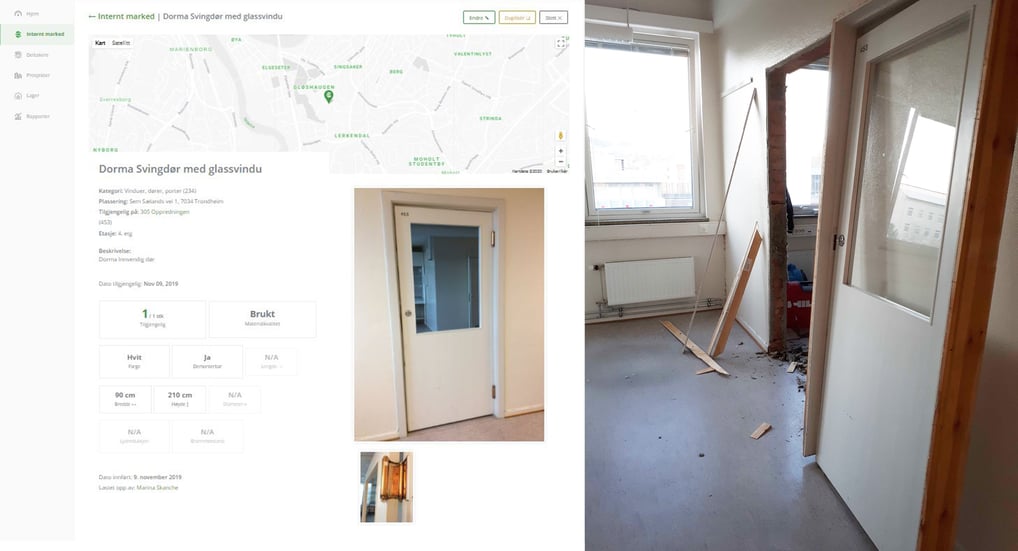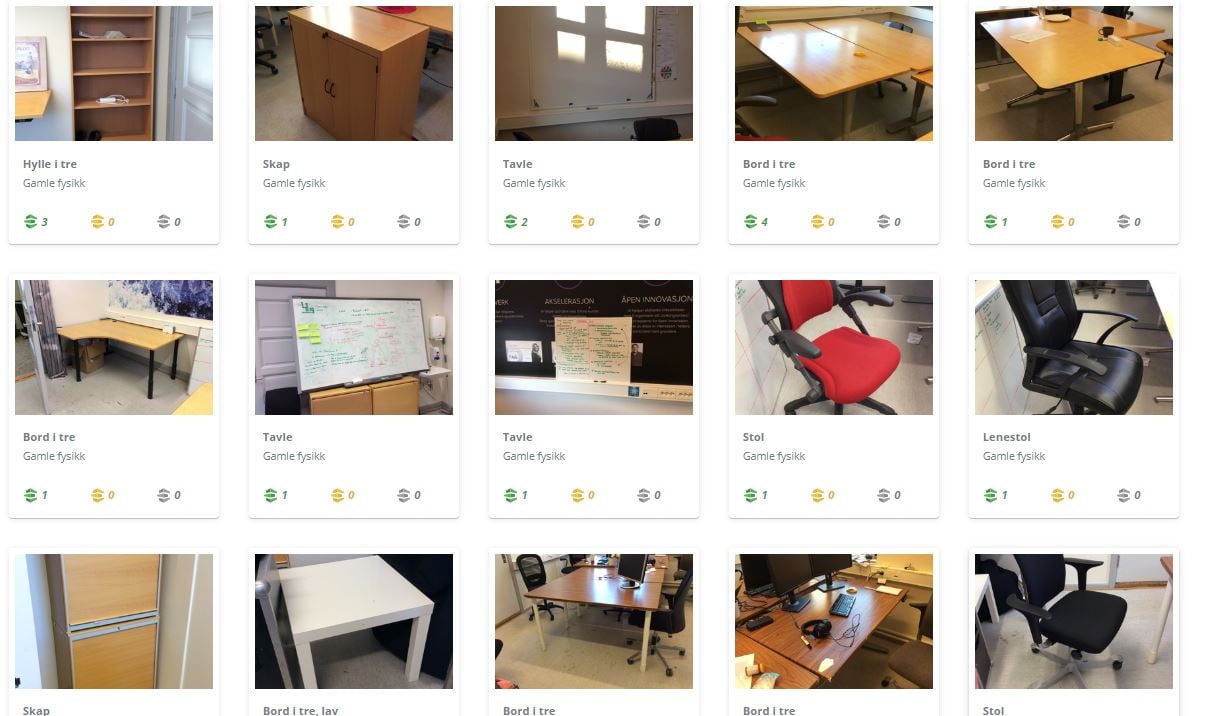In 2012, Universitetsavisa (The university newspaper) published the article “Gode møbler går på dynga” (Good furniture goes to the landfill) where it was revealed that NTNU stores away solid and usable office furniture that ends up on the landfill instead of being reused. This has long been the case at Norway's largest university, but now NTNU is taking action to reuse furniture and inventory that are used annually by about 7,600 employees and almost 42,000 students. We have therefore interviewed one of these students, architecture student Elisabeth Freundorfer who has registered materials at NTNU by using Loopfront.
 Foto: Irhana Šehović. Elisabeth Freundorfer og Vilde Vår Høydahl registrerer materialer på NTNU
Foto: Irhana Šehović. Elisabeth Freundorfer og Vilde Vår Høydahl registrerer materialer på NTNU
To be able to reach EUs requirement of 70% reuse and recycling of materials it's crucial to be able to interact digitally in building and demolition-projects. The first and foremost step in the process is mapping available material resources. How do one navigate this process?
When using the Loopfront App, registering available material is quite intuitive and therefore easy to handle. After signing up and creating a project (for example a campus building), materials can be added to the location. To register those, you fill out a form with different questions related to the qualities of the materials. These questions guide you through the process of registering.
How long does it take to register materials in a campus-building?
Of course it takes its time, since there are just so many materials available that can be reused. But when taking the amount into consideration, the registration goes surprisingly fast. Especially once a foundation of the different types of available inventory in the building is created, f. ex. doors can be duplicated with small changes of details instead of creating a completely new entry. In this way, we managed to register roughly 3000 materials in about 50 working hours. Which is approximately one minute per object.

Have you seen any significant impacts of the registration of materials at campus?
Big changes take time and I was working with the Loopfront-platform for only half a year before the campus closed due to the COVID-Lockdown. But during this time, I got to re-plan some rooms at NTNU with a fellow architecture student and it helped a lot to have an overview of available materials which could be taken into account for our planning without always having to consider and double-check the budget we had available. In our specific case, reusing used materials encouraged us to become more creative with redesign and refurbishing old furniture, which gave them a personal touch to fit the new surroundings.
Why do you think many organisations, like schools and universities haven’t considered reuse as an option before now?
I assume as a first step, there is a need for someone who recognizes the opportunity of reuse and takes a leading role in changing the given ways. This is closely connected with the obvious fact that reusing existing materials instead of buying new ones demands working on creating new processes: Used objects in a good shape need to be stored somewhere, and someone needs to have an overview of which materials are currently available for transportation and distribution.
However, in the long run, reusing materials will save resources, not only in CO2 footprints, but also money for the company, when objects can be reused instead of buying new ones.
I personally think that Loopfront offers a great help to the problems initially mentioned, since it allows easy registration of available material stock and a means of always having an overview over what might be used when.
Reusing materials saves resources, not only in terms of CO2 footprint, but also money for the organization, when objects can be reused instead of paying for new ones. Do you want help reaching your circular goals and save money in the process? Contact us!




 Foto: Irhana Šehović. Elisabeth Freundorfer og Vilde Vår Høydahl registrerer materialer på NTNU
Foto: Irhana Šehović. Elisabeth Freundorfer og Vilde Vår Høydahl registrerer materialer på NTNU